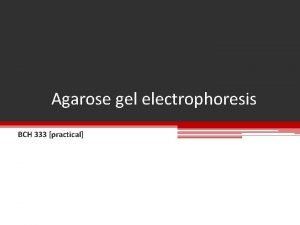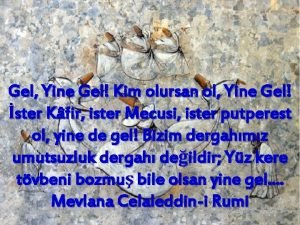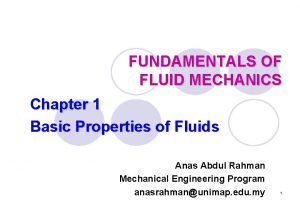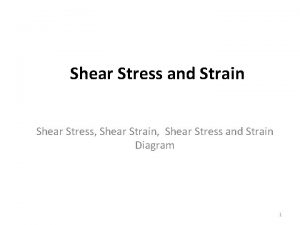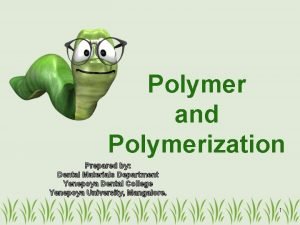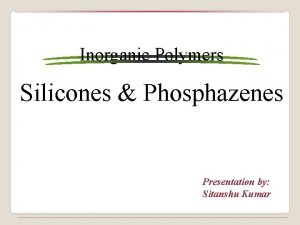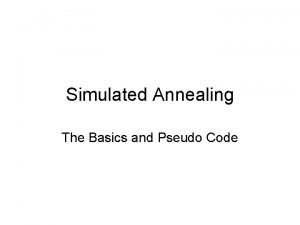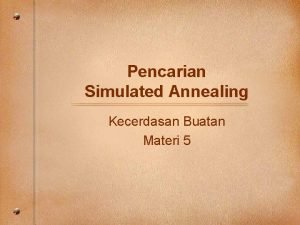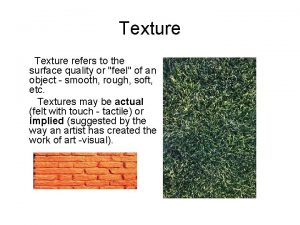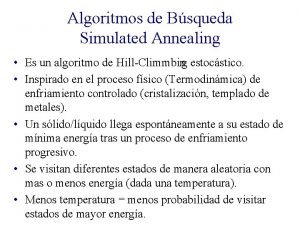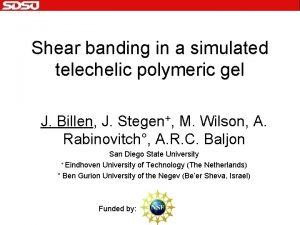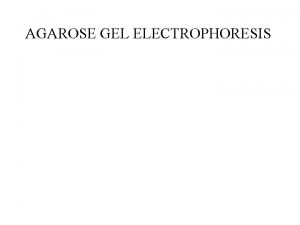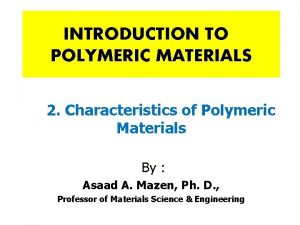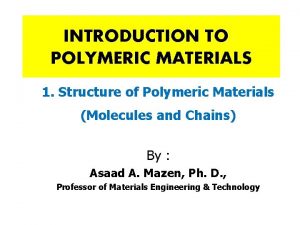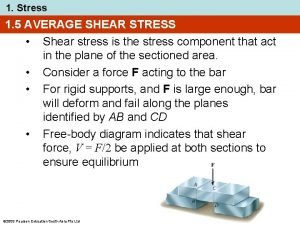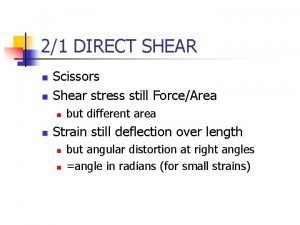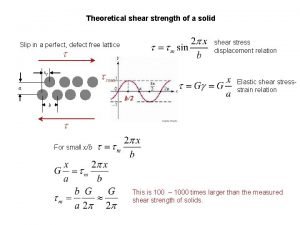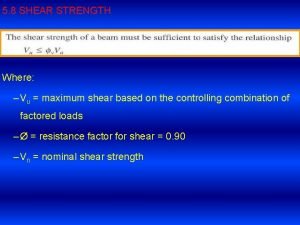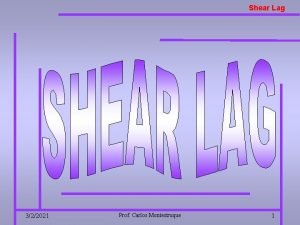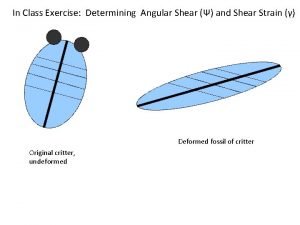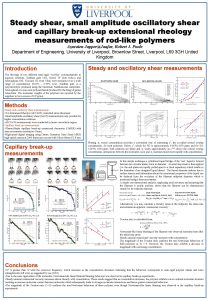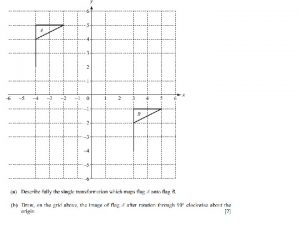Rheological study of a simulated polymeric gel shear






![Viscosity Visco-elastic properties Shear rate [J. Sprakel et al. , Soft Matter (2009)] Viscosity Visco-elastic properties Shear rate [J. Sprakel et al. , Soft Matter (2009)]](https://slidetodoc.com/presentation_image_h/d6547ed51cceac356723fbfc68b737d5/image-7.jpg)


![Bead-spring model [K. Kremer and G. S. Krest. J. Chem. Phys 1990] Attraction beads Bead-spring model [K. Kremer and G. S. Krest. J. Chem. Phys 1990] Attraction beads](https://slidetodoc.com/presentation_image_h/d6547ed51cceac356723fbfc68b737d5/image-10.jpg)
![[A. Baljon et al. , J. Chem. Phys. , 044907 2007] Associating polymer • [A. Baljon et al. , J. Chem. Phys. , 044907 2007] Associating polymer •](https://slidetodoc.com/presentation_image_h/d6547ed51cceac356723fbfc68b737d5/image-11.jpg)
![Dynamics of associating polymer (I) D U [e] • Monte Carlo: attempt to form Dynamics of associating polymer (I) D U [e] • Monte Carlo: attempt to form](https://slidetodoc.com/presentation_image_h/d6547ed51cceac356723fbfc68b737d5/image-12.jpg)
![Dynamics of associating polymer (II) -D U [e] • Monte Carlo: attempt to break Dynamics of associating polymer (II) -D U [e] • Monte Carlo: attempt to break](https://slidetodoc.com/presentation_image_h/d6547ed51cceac356723fbfc68b737d5/image-13.jpg)






![distance from wall [s] 30 Stress under constant shear 0 All results T=0. 35 distance from wall [s] 30 Stress under constant shear 0 All results T=0. 35](https://slidetodoc.com/presentation_image_h/d6547ed51cceac356723fbfc68b737d5/image-20.jpg)
![distance from wall [s] 30 Velocity profiles 0 Before yield peak: homogeneous After yield distance from wall [s] 30 Velocity profiles 0 Before yield peak: homogeneous After yield](https://slidetodoc.com/presentation_image_h/d6547ed51cceac356723fbfc68b737d5/image-21.jpg)
![Velocity profile over time • Fluctuations of interface fixed wall velocity [s/t] distance from Velocity profile over time • Fluctuations of interface fixed wall velocity [s/t] distance from](https://slidetodoc.com/presentation_image_h/d6547ed51cceac356723fbfc68b737d5/image-22.jpg)








- Slides: 30

Rheological study of a simulated polymeric gel: shear banding J. Billen, J. Stegen+, M. Wilson, A. Rabinovitch°, A. R. C. Baljon + Eindhoven University of Technology (The Netherlands) ° Ben Gurion University of the Negev (Be’er Sheva, Israel) Funded by:

Polymers • Long-chain molecules of high molecular weight polyethylene [Introduction to Physical Polymer Science, L. Sperling (2006)]

Motivation of research Polymer science Polymer chemistry (synthesis) Polymer physics Polymer rheology

Introduction: polymeric gels

Polymeric gels Reversible junctions between endgroups (telechelic polymers) Concentration Sol Temperature Gel

Polymeric gels • Examples – PEO (polyethylene glycol) chains terminated by hydrophobic moieties – Poly-(N-isopropylacrylamide) (PNIPAM) • Importance: – laxatives, skin creams, tooth paste, paintball fill, preservative for objects salvaged from underwater, eye drops, print heads, spandex, foam cushions, … – cytoskeleton
![Viscosity Viscoelastic properties Shear rate J Sprakel et al Soft Matter 2009 Viscosity Visco-elastic properties Shear rate [J. Sprakel et al. , Soft Matter (2009)]](https://slidetodoc.com/presentation_image_h/d6547ed51cceac356723fbfc68b737d5/image-7.jpg)
Viscosity Visco-elastic properties Shear rate [J. Sprakel et al. , Soft Matter (2009)]

Hybrid MD/MC simulation of a polymeric gel

Molecular dynamics simulation ITERATE • Give initial positions, choose short time Dt • Get forces • Move atoms • Move time t = t + Dt and acceleration a=F/m
![Beadspring model K Kremer and G S Krest J Chem Phys 1990 Attraction beads Bead-spring model [K. Kremer and G. S. Krest. J. Chem. Phys 1990] Attraction beads](https://slidetodoc.com/presentation_image_h/d6547ed51cceac356723fbfc68b737d5/image-10.jpg)
Bead-spring model [K. Kremer and G. S. Krest. J. Chem. Phys 1990] Attraction beads in chain U [e] Repulsion all beads Distance [s] • Temperature control through coupling with heat bath 1 s
![A Baljon et al J Chem Phys 044907 2007 Associating polymer [A. Baljon et al. , J. Chem. Phys. , 044907 2007] Associating polymer •](https://slidetodoc.com/presentation_image_h/d6547ed51cceac356723fbfc68b737d5/image-11.jpg)
[A. Baljon et al. , J. Chem. Phys. , 044907 2007] Associating polymer • Junctions between end groups : FENE + Association energy U [e] U bo nd • Dynamics … Unobond Distance [s]
![Dynamics of associating polymer I D U e Monte Carlo attempt to form Dynamics of associating polymer (I) D U [e] • Monte Carlo: attempt to form](https://slidetodoc.com/presentation_image_h/d6547ed51cceac356723fbfc68b737d5/image-12.jpg)
Dynamics of associating polymer (I) D U [e] • Monte Carlo: attempt to form junction P=1 form P<1 possible form Uassoc Distance [s]
![Dynamics of associating polymer II D U e Monte Carlo attempt to break Dynamics of associating polymer (II) -D U [e] • Monte Carlo: attempt to break](https://slidetodoc.com/presentation_image_h/d6547ed51cceac356723fbfc68b737d5/image-13.jpg)
Dynamics of associating polymer (II) -D U [e] • Monte Carlo: attempt to break junction P<1 possible break P=1 break Uassoc Distance [s]

Simulation details • 1000 polymeric chains, 8 beads/chain • Units: s (length), e (energy&temperature), m (mass), t=s(m/e)1/2 (time); • Box size: (23. 5 x 20. 5 x 27. 4) s 3 with periodic boundary conditions

Simulated polymeric gel T=1. 0 only endgroups shown

Shearing the system Some chains grafted to wall; move wall with constant shear rate moving wall fixed wall

Shear banding in polymeric gel

Shear-Banding in Associating Polymers • PEO in Taylor-Couette system two shear bands stress velocity Plateau in stress-shear curve moving wall [J. Sprakel et al. , Phys Rev. E 79, 056306 (2009)] fixed wall shear rate distance

Shear-banding in viscoelastic fluids • Interface instabilities in worm-like micelles time [Lerouge et al. , PRL 96, 088301 (2006). ]
![distance from wall s 30 Stress under constant shear 0 All results T0 35 distance from wall [s] 30 Stress under constant shear 0 All results T=0. 35](https://slidetodoc.com/presentation_image_h/d6547ed51cceac356723fbfc68b737d5/image-20.jpg)
distance from wall [s] 30 Stress under constant shear 0 All results T=0. 35 e (< micelle transition T=0. 5 e) stress yield peak plateau
![distance from wall s 30 Velocity profiles 0 Before yield peak homogeneous After yield distance from wall [s] 30 Velocity profiles 0 Before yield peak: homogeneous After yield](https://slidetodoc.com/presentation_image_h/d6547ed51cceac356723fbfc68b737d5/image-21.jpg)
distance from wall [s] 30 Velocity profiles 0 Before yield peak: homogeneous After yield peak: 2 shear bands
![Velocity profile over time Fluctuations of interface fixed wall velocity st distance from Velocity profile over time • Fluctuations of interface fixed wall velocity [s/t] distance from](https://slidetodoc.com/presentation_image_h/d6547ed51cceac356723fbfc68b737d5/image-22.jpg)
Velocity profile over time • Fluctuations of interface fixed wall velocity [s/t] distance from wall [s] moving wall time [t]

Chain Orientation Qxx=1 Qzz=-0. 5 z Shear direction y rij x

Chain orientation • Effects more outspoken in high shear band

Aggregate sizes • Sheared: more smaller and larger aggregates size=4 • High shear band: largest aggregates as likely

Conclusions • MD/MC simulation reproduces experiments – Plateau in shear-stress curve – Shear banding observed – Temporal fluctuations in velocity profile • Microscopic differences between sheared/ unsheared system – Chain orientation – Aggregate size distribution • Small differences between shear bands • Current work: local stresses, positional order, secondary flow, network structure

Equation of Motion K. Kremer and G. S. Grest. Dynamics of entangled linear polymer melts: A molecular-dynamics simulation. Journal of Chemical Physics, 92: 5057, 1990. • Interaction energy • Friction constant; • Heat bath coupling – all complicated interactions • Gaussian white noise • <Wi 2>=6 k. B T (fluctuation dissipation theorem)

Predictor-corrector algorithm 1)Predictor: Taylor: estimate at t+dt 4) Corrector step: 2) From calculate forces and acceleration at t+dt 3) Estimate size of error in prediction step: Dt=0. 005 t

Polymeric gels Associating: reversible junctions between endgroups Concentration Sol Temperature Gel

Simulation details • 1000 polymeric chains, 8 beads/chain • Units: s (length), e (energy&temperature), m (mass), t=s(m/e)1/2 (time); • Box size: (23. 5 x 20. 5 x 27. 4) s 3 with periodic boundary conditions • Concentration = 0. 6/s 3 (in overlap regime) • Radius of gyration: • Bond life time > 1 / shear rate
 Agarose vs acrylamide gel
Agarose vs acrylamide gel Gel kim
Gel kim Agarose gel vs polyacrylamide gel
Agarose gel vs polyacrylamide gel Shear thinning vs shear thickening
Shear thinning vs shear thickening Shear stress and strain formula
Shear stress and strain formula Polymeric dental materials
Polymeric dental materials What is polymeric backbone in silicones and phosphazenes
What is polymeric backbone in silicones and phosphazenes Transversion
Transversion Simulated annealing pseudocode
Simulated annealing pseudocode Eet code
Eet code Tenacious proximal fusion
Tenacious proximal fusion Tone value
Tone value Contoh simulated annealing
Contoh simulated annealing The actual surface feel of the simulated appearance
The actual surface feel of the simulated appearance Simulated forgery definition
Simulated forgery definition Simulated killing philosophy
Simulated killing philosophy Actual texture
Actual texture Diacritics definition forensics
Diacritics definition forensics Actual, simulated, abstract, and invented texture.
Actual, simulated, abstract, and invented texture. Surface quality or feel of an object
Surface quality or feel of an object Elements and principles of art
Elements and principles of art Stimulated texture in art
Stimulated texture in art Búsqueda basada en imágenes
Búsqueda basada en imágenes In area
In area Retrospective cohort study vs prospective cohort study
Retrospective cohort study vs prospective cohort study Work study objectives
Work study objectives Work study and method study
Work study and method study Difference between time study and motion study
Difference between time study and motion study Marty lobdell study less study smart
Marty lobdell study less study smart Case series
Case series Mevlana ne olursan ol gel
Mevlana ne olursan ol gel
